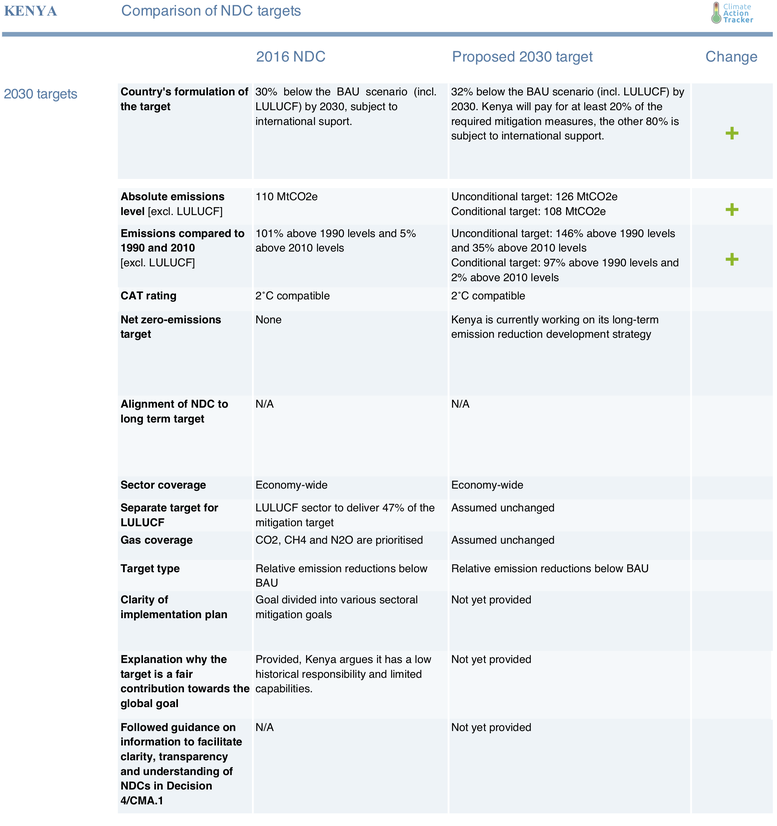Summary
Kenya proposes unconditional target and slightly more ambitious conditional NDC target
Kenya proposed updated NDC targets at the Climate Action Summit in December 2020. It announced an unconditional target for the first time and increased its conditional target. While the introduction of an unconditional target is welcome, there is still much scope to further enhance its target. The CAT rating remains unchanged at 2˚C compatible.
CAT analysis of NDC announcement


At the Climate Ambition Summit, on 12 December 2020, President Uhuru Kenyatta announced that Kenya will strengthen its NDC target to a 32% reduction below BAU levels by 2030 (incl. LULUCF), up from its previous target of 30%. The previous NDC target was entirely conditional on international support. For the new target, Kenya will use its domestic resources to achieve part of this target, which we calculate to be equivalent to an unconditional target of around 6% below BAU (incl. LULUCF).
The President did not provide any details on how the new NDC target will be calculated. For the purposes of this analysis, we assume that the business as usual (BAU) scenario, sector contribution to achieving the target and LULUCF assumptions used in the CAT country assessment remain unchanged.
While we welcome Kenya’s enhanced NDC target, the country could increase ambition even more. Bottom-up sectoral analysis completed in 2017 identified potential emission reductions equivalent to a 60% reduction below BAU by 2030. Therefore, there is much greater scope for Kenya to increase its conditional target.
Kenya anticipates meeting about half of its NDC with reductions in land sector emissions. Excluding this sector, emissions in 2030 will be slightly lower under the new conditional target, decreasing from 110 to 108 MtCO2e. The new target is equivalent to a -17% reduction below BAU by 2030.
President Kenyatta stated that Kenya is now prepared to fulfil 20% of the estimated 18 million USD cost of meeting its NDC using its own financial resources. In the absence of information on sectoral mitigation costs, we assume that this 20% financial contribution is equivalent to a 20% share of the emission reductions achieved. On that based, emissions in 2030 under Kenya’s unconditional target would be 126MtCO2e, around a 3% reduction below BAU (excl. LULUCF).
Kenya’s CAT rating remains at “2˚C compatible”. The new unconditional target falls within the “2˚C compatible” range. The emission levels of the conditional target are consistent with a “1.5 Paris compatible” rating. Our rating for the former conditional target was downgrading to “2˚C compatible” due to the fact that it was conditional and depending on international financial support.
Kenya plans to formally submit its updated NDC to the UNFCCC before 31 December 2020. We expect the document to contain more detailed information on mitigation plans and the relative contribution of various sectors, which would allow us to provide a more detailed analysis of the country’s target.
Links
Stay informed
Subscribe to our newsletter
